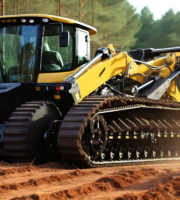More and more businesses are taking advantage of the benefits of 3D printing as technology evolves and becomes more accessible. Rapid prototyping has been around for years, but recent developments in 3D printing technology are causing a great deal of shift. We’ve compiled five of the best examples here.
1- Increasing the Number of Products Made to Order
One of the most obvious benefits of 3D printing is the ease with which several different models can be produced with a single printer. There has been a recent uptick in commercializing 3D-printed, fully customized objects, sometimes created in tandem with 3D scanning technologies. Prosthetic limbs, for instance, may now be made via 3D printing, which is both more affordable and a better fit for the patient’s anatomy. Some speculate that in the not-too-distant future, more businesses may begin providing personalized alternatives for items that haven’t previously had them. For instance, you could give the customer a pair of headphones with custom-printed cushions to fit in their ear or make shoes tailored to the customer’s specific foot shape.
2- Innovative Design Options
Additive manufacturing offers fewer design constraints than other methods of manufacturing. Although most limitations can be surmounted by combining production techniques or by breaking the design into many sections, 3D printing enables industrial architects to pursue ideas that would otherwise be impossible. Objects with intricate internal architectures can be built from a single block of material, and moving parts can be integrated into the design from the start. The size of an object doesn’t matter when using 3D printing. Already, one company is going all in by using this technology to construct full homes.
3- Simple Substitutions
More machines could be built with 3D-printed components as the technology gains popularity among consumers. The benefits mentioned up to this point are only the tip of the iceberg. The most notable feature of a 3D printed part is that it can be replaced with any 3D printer that is compatible with it. Shipping digital blueprints of various product components may become standard practice, especially for industrially-focused products. Rather than placing an order with the manufacturer, the customer could make the necessary replacement parts themselves.
4- Greater Use of Waste-Reduction Techniques
If the recycled material is processed correctly, 3D printers may use it without problems. One of the biggest impediments to 3D printing is being overcome as devices that convert waste plastic into 3D printing material are now available. Rather than importing more sophisticated plastic, you can make your material by recycling common items like milk jugs. Many businesses might switch to using mostly recycled plastics if they adopt 3D printing technology.
5- Quick Prototyping
Rapid prototyping is possible with 3D printing since parts may be produced in a matter of hours in a manufacturing industry. This expedites the process at every level. In comparison to manufacturing prototypes, 3D printing is both cheaper and more efficient at making parts because the part may be done in hours rather than days.






